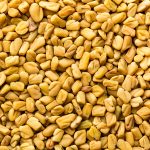Bael (Aegle marmelos (L.), Correa ex. Roxb., Rutaceae) is used in Ayurvedic medicine for its anti-diabetic and hypolipidaemic properties. It is a small tree found growing throughout most of south-eastern Asia. It grows in dry forest in India, mainly the plateau regions of the Himalayas. The leaves, fruit, stems and roots have all been used to treat various ailments.
Aqueous extracts of the seeds are particularly popular. Research using diabetic rat models has shown reduction in rat blood glucose levels, reduction in total cholesterol , triglyceride and low density lipoprotein with a concomitant increase in high density lipoprotein (HDL) (Kesari et al., 2006). It also has antifungal activity showing 80% inhibition at 400ppm against the mould Fusarium udum in a spore germination assay, when applied as an essential oil extracted from the leaves (Rana et al., 1997). It also shows activity against various Trichophyton spp. and Microsporum spp. which are dermal moulds (Balkumar et al., 2011).
References
Balakumar, S., Rajan, S., Thirunalasundan, T., Jeeva, S. (2011) Antifungal activity of Aegle marmelos (L.) Correa (Rutaceae) leaf extract on dermatophytes. Biomedicine 1(4) pp. 309-312
Kesari , A.N., Gupta, R.K., Singh, S.K., Diwakar, S., Watal, G. (2006) Hypoglycemic and antihyperglycemic activity of Aegle marmelos seed extract in normal and diabetic rats. J. Ethnopharmacol. 107 pp.374–79.
Rana, B.K., Singh, U.P., Taneja, V. (1997) Antifungal activity and kinetics of inhibition by essential oil isolated from leaves of Aegle marmelos. J. Ethnopharmacol. 57 (1) pp.29-34.

Leave a Reply